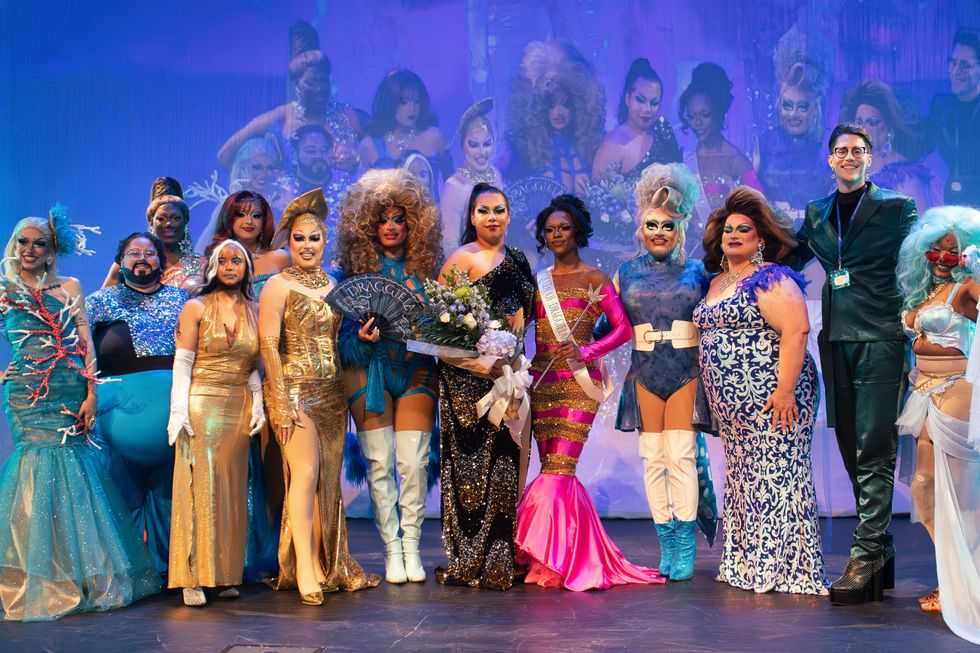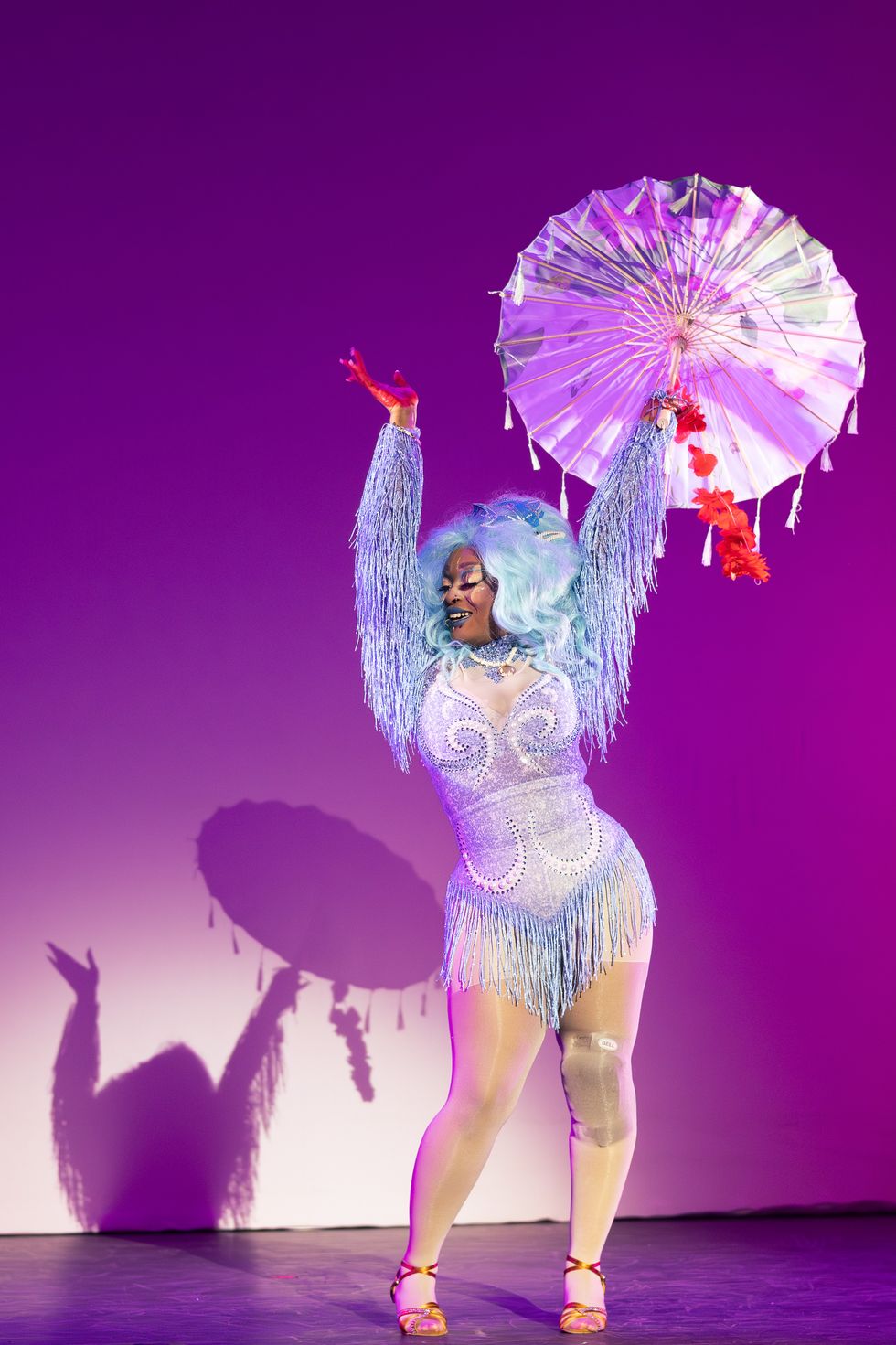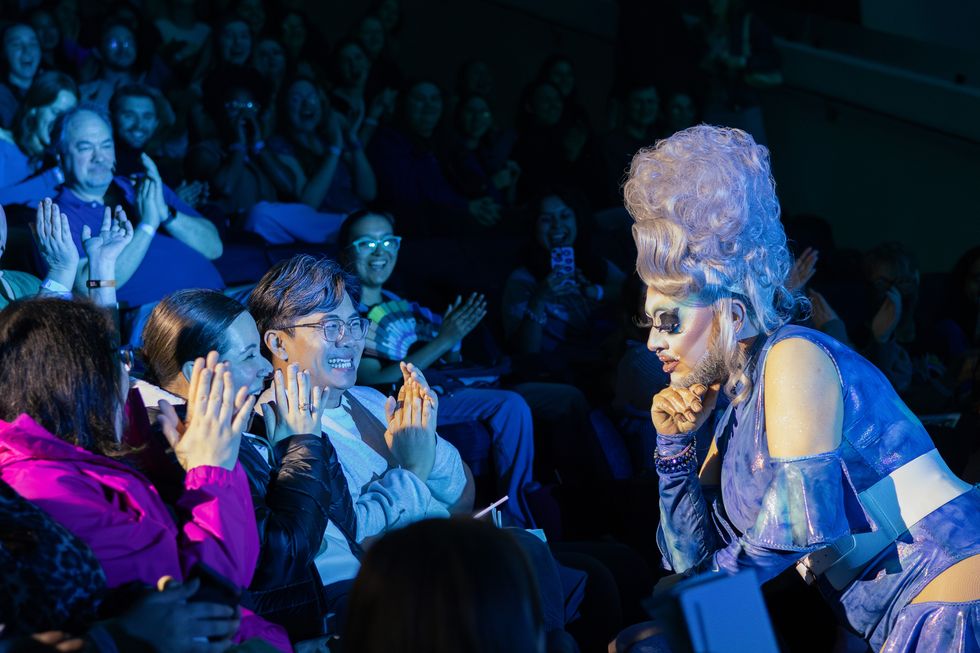On the night of Donald Trump’s inauguration, protesters gathered, beer bottles and resistance-themed posters in hand, in London’s Trafalgar Square. Police in yellow vests tentatively circled the crowd, which had gathered for something that was as much a party as it was a protest. There was a DJ, a mic, and speakers glimmering blue in the dark. The Facebook event had been branded “Trump, Wasteman, That’s Not Me” (the British insult implied Trump is a waste of a man), and a giant orange effigy of Trump’s head lay in the center of the protest. Later, it would be destroyed by protesters with sticks — but the protest was marked not so much by the fury of its attendees as it was by their youth. There were people in their late teens and early 20s as angry about a leader halfway across the globe as they were about their own prime minister.
One of the people in the crowd was Josefine Brons, then 19 years old. A German international student, Brons didn’t overtly display the mantle of an activist, like so many in the crowd; she didn’t menacingly wave a beer bottle in hand nor did she rant on the mic. But that didn’t make her any less serious of an activist.
[quote position="left" is_quote="true"]There really is a sense that people have reached their breaking point.[/quote]
Brons had been involved in anti-fascist work since she was 15 before moving to Britain for her studies — in Germany, anti-fascism takes on more urgency than in the United States, with roots in an organized struggle against Nazis that has lasted from World War II until today. She was part of a rising tide of protests organized by young people across Britain, which opposed both Trump and Theresa May, the Conservative home secretary who became prime minister after Brexit and who maintained this week that she has “the full support of her cabinet” despite calls for immediate resignation from fellow conservative leaders following a “disastrous” speech at the Conservative Party conference and a controversial year of failed gambles and political missteps.
“I just think it’s really important to stand in solidarity with people who are marginalized,” Brons explains. “[Who] are being told just because they were born with a certain passport, they can’t cross borders or they can’t live in peace and achieve what they want to achieve.”
Since the U.K. elected to leave the European Union through popular referendum in June 2016, hate crimes, fear of deportations, and anti-immigration rhetoric have been on the rise. The pro-Brexit campaign used xenophobia to persuade British voters to leave the EU, and both British politics and society have become deeply polarized as a result. On Jan. 27, 2017, May incited more controversy after holding hands with Trump and inviting him on an official visit to the U.K., which isn’t standard for American presidents until they’re at least in their second term, if re-elected.
“The things Trump has done are the things Theresa May has been doing, really,” explains Antonia Bright, an activist with immigrant rights group Movement for Justice by Any Means Necessary. “It’s not inconsistent with who Theresa May was as home secretary, the targeting and harassment of Muslim people, the tightening of borders, [and] the intention to spend millions of pounds building fences, when people themselves are suffering.”
Protests spread all across the country after Trump’s inauguration, led not by a specific group, but everyday people dissatisfied with the status quo.
“Seemingly out of the blue, on the 21st of January, there was the Women’s March, which was the biggest globally-coordinated series of mobilization [efforts] since the Iraq War,” Samir Dathi, a longtime activist on the left, says. “And these protests are big. And very, very vibrant, very diverse, very young. And they’re separate from the organized left. That’s why you saw so many homemade placards.”
Stop Trump emerged to channel the outrage of Britain’s young people into an organized movement, rather than letting it stop at a series of protests, with the immediate goal of denying Trump’s visit to the U.K. Founded by Owen Jones, a leftist journalist and author of the best-selling book “The Establishment,” Stop Trump was a grassroots coalition of individuals and organizations that relied on crowdfunding to operate. Dathi is now its only full-time paid employee.
Stop Trump wanted to find a way to capitalize on the fresh wave of young people who’d broken from conventional organizations on the left, such as the Socialist Workers Party and Stand Up to Racism, which are heavily institutionalized and found their credibility undermined due to sexual assault allegations and an unpopular #Lexit (“Left Exit”) campaign.
The coalition’s work included organizing a protest in central London in early February and contributing to a migrant solidarity campaign called One Day Without Us, which protested deportations and migrant abuse. Stop Trump also organized community meetings and discussions open to the public, where participants discussed immigration, politics, racism, and the deterioration of public services in Britain.
But the tenor of Stop Trump and many other activist groups changed on April 18, when May called a snap election. Unlike the U.S. presidential system, the Parliament enables the current ruling government to call elections before the end of term. (It would be as if Trump were so confident in the GOP’s hold on America that he decided to hold the 2018 elections now.) The show of confidence was particularly bold because May had not been elected to power; she was more of an interim prime minister, inheriting the mantle from David Cameron, who resigned in the wake of the Brexit vote.
If her gamble proved successful, the snap election would be a way for May to solidify her power and validate Brexit. So Stop Trump and others in the activist community started focusing on a single goal: ensuring that May was not re-elected.
Britain’s National Union of Students (NUS) took the snap election as an opportunity to mobilize, urging students and young people to vote, guiding them through registration, and canvassing them to participate in the election.
Malia Bouattia, the president of the NUS at the time and the first Muslim woman of color to be elected to the position, says that the early furor against Trump was nothing but a trial run for British young people to show their voice mattered in their country’s politics.
“A huge amount of young people, around 80%, were disappointed with the results of the EU referendum,” Bouattia says. “They were upset about Brexit and wanted to take action very soon after those events. They were completely ready. When the snap general election was called, they were ready to strike.”
Hidigo Dulane, a 26-year-old British-Somali junior doctor who works for the National Health Service, says her local youth group for the Labour Party, the liberal opposition against May, canvassed for the vote. (In case you need a primer on England’s many parties, here are the basics: The Labour Party is essentially the British equivalent of the Democratic Party, though support for the working class and public service programs was historically institutionalized throughout the party before Tony Blair's neoliberal turn toward New Labour in the early 2000s. The Tories are the Conservative Party but stand at a center-right orientation unlike today's more far-right Republicans. The Tories produced Winston Churchill and Margaret Thatcher as prime ministers.)
Prior to the election, the group was “canvassing day in and day out,” Dulane says. “I’ve got friends or relatives who weren’t necessary gonna vote or who aren’t Labour voters. I was like, you know what? People are actually feeling more inspired, and people want to do more. I have people, who are young guys, texting me like, ‘When is young Labour going to be canvassing? I wanna help.’”
But even for all this effort, Dulane did not think it was likely Labour would win or even cause a major upset against the Conservative Party. Jeremy Corbyn, the leftist leader of the Labour Party, has often been likened to Bernie Sanders and has been undermined by members of his own party for his resistance to centrist politics.
On June 8, the day of the snap election, turnout among 18- to 24-year-olds was at 60%, compared with 44% in 2015. An overwhelming amount of young people and ethnic minorities voted for Corbyn and found their vote made a difference. Even some of the wealthiest and most conservative districts in the U.K., such as Kensington and Canterbury, voted Labour.
Instead of strengthening May’s hand before the Brexit talks, the election lost the Conservatives a majority in Parliament and resulted in a “hung Parliament” — essentially a government lacking a majority in power and which requires political parties to form a coalition in order to rule effectively.
Six months after Trump’s inauguration, and almost exactly a year after Brexit, the Leftists won. And the Labour Party’s restoration to power wouldn’t have been possible without grassroots mobilization and mass turnout of young people to vote.
“It’s the fact they live in a world they don’t like,” Bouattia says. “They were voting for a better vision of the future. And an alternative world in which there is investment in the welfare state, investment in education, divestment from war, [and] divestment from a state completely consumed by questions of surveillance.”
[quote position="full" is_quote="true"]I think everyone was in this mindset like, ‘OK, after Brexit, after Trump, after everything that has happened, why should something that positive happen?’ But it did.[/quote]
Corbyn’s breakthrough inspired British citizens, but it didn’t fix the issues they faced. And though her tenure is shaky, May remains in power. Grenfell Tower, residential housing that was filled mostly with immigrants and people of color, burned down only a few days after the election, sparking protests against austerity and cuts to public housing. A few days later, a man drove a van over people leaving Finsbury Park mosque, resulting in the death of one person and the injury of 11 others — an action that felt eerily familiar again in August during the Charlottesville protests.
Acid attacks targeted against Muslims have been on the rise, most significantly burning the skin of a young British-Pakistani woman on her 21st birthday. The death of Rashan Charles, a 20-year-old black man, led to protesters facing riot police in east London. Recently, the police department failed to suspend the officer involved in Charles’ death, a scenario known too well in similar cases in the U.S.
Additionally, the frequency of terrorist attacks in the U.K. this year, including the Muslim woman who was recently attack in the London Underground, has only increased surveillance of Muslims (and others) in the area and has deeply polarized society.
“There really is a sense that people have reached their breaking point,” Dathi says.
But not everyone in Britain has accepted their circumstances. If anything, every act of violence has galvanized people to respond and change the world they live in.
“It’s one thing after another, after this general election,” Bouattia says. “But people are awake to that. They’re responding as these things develop, and it’s horrific that’s what it takes. But whenever anything happens in relation to questions of oppression, of injustice, of discrimination in the U.K., we see a huge response.”
Bouattia stepped down as president of the NUS on July 3 after losing campaign for re-election. She told The Guardian her year as president was the most difficult of her life, characterized by “endless hate mail” and harassment both online and in public. But Bouattia says she has never felt more hopeful than she does now.
“I am incredibly hopeful, and I think things will be sustained and continued,” she says. “I think we will continue to encourage people to organize whenever and wherever they can. And yes, I think that’s what I’ll continue to do for the rest of my life.”
Brons agrees, noting that a lot of young people were excited with the election results and the oncoming change. “I’ve got a positive mindset at the moment because I think everyone expected a Tory landslide victory,” she says. “I think everyone was in this mindset like, ‘OK, after Brexit, after Trump, after everything that has happened, why should something that positive happen?’ But it did. And that gave a lot of hope to people, especially young people.”
While no easy solutions exist for issues facing both the U.K. and U.S. — whether it’s the refugee crisis, deportations, racism cosigned by political leaders, or cuts to health care and public services — the participation of everyday citizens in British politics has proved change is possible if people put a will to it. Most importantly, the involvement of young people in political activity elevated them to agenda-setters in their own right. After all, if Trump declined visiting the U.K. because of mass outcry in the streets, anything might be possible in the U.S., where his approval rating is lower than any modern president.















 Let us all bow before Gary, the Internet's most adventurous feline. Photo credit: James Eastham
Let us all bow before Gary, the Internet's most adventurous feline. Photo credit: James Eastham Gary the Cat enjoys some paddling. Photo credit: James Eastham
Gary the Cat enjoys some paddling. Photo credit: James Eastham James and Gary chat with Ryan Reed and Tony Photo credit: Ryan Reed
James and Gary chat with Ryan Reed and Tony Photo credit: Ryan Reed


 Rock deterioration has damaged some of the inscriptions, but they remain visible. Renan Rodrigues Chandu and Pedro Arcanjo José Feitosa, and the Casa Grande boys
Rock deterioration has damaged some of the inscriptions, but they remain visible. Renan Rodrigues Chandu and Pedro Arcanjo José Feitosa, and the Casa Grande boys The Serrote do Letreiro site continues to provide rich insights into ancient life.
The Serrote do Letreiro site continues to provide rich insights into ancient life.

 The contestants and hosts of Draggieland 2025Faith Cooper
The contestants and hosts of Draggieland 2025Faith Cooper Dulce Gabbana performs at Draggieland 2025.Faith Cooper
Dulce Gabbana performs at Draggieland 2025.Faith Cooper Melaka Mystika, guest host of Texas A&M's Draggieland, entertains the crowd
Faith Cooper
Melaka Mystika, guest host of Texas A&M's Draggieland, entertains the crowd
Faith Cooper


